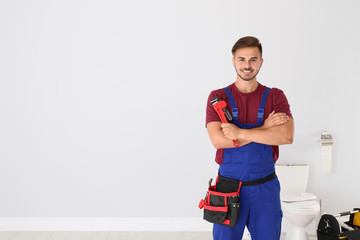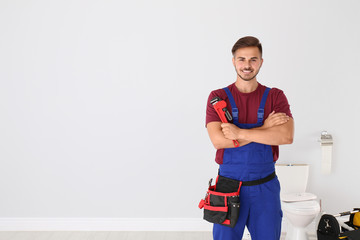Plumbing Plano is a critical aspect of modern infrastructure, yet its complexities often go unnoticed until issues arise. It encompasses a wide range of systems, from water supply and drainage to heating and sanitation, each requiring a distinct level of expe rtise and innovation. The evolution of plumbing has led to significant improvements in how water is managed and distributed within residential, commercial, and industrial settings.
rtise and innovation. The evolution of plumbing has led to significant improvements in how water is managed and distributed within residential, commercial, and industrial settings.
Advances in materials, technology, and methods have transformed traditional approaches into highly efficient and sustainable solutions. Understanding the modern landscape of plumbing not only enhances practical knowledge but also promotes better management of resources and environmental impact.
The foundation of any plumbing system lies in the design and installation of pipes, fixtures, and fittings. Proper planning ensures that water flows efficiently to and from the intended points without causing leaks, pressure imbalances, or contamination. Materials used in modern plumbing systems have shifted from traditional metals to high-performance polymers and composite materials, which are more resistant to corrosion and easier to install. Flexible piping has gained popularity due to its ability to withstand varying pressure levels and adapt to complex layouts. This shift not only reduces installation time but also minimizes the risk of long-term maintenance issues.
Water conservation has become a central focus in plumbing design, with innovations aimed at reducing waste and promoting efficiency. Low-flow fixtures, sensor-activated taps, and dual-flush toilets are now standard in many new constructions. These systems help regulate water usage without compromising performance, contributing to lower utility costs and reduced environmental impact. Additionally, the integration of greywater recycling systems allows for the reuse of wastewater from sinks and showers for purposes such as irrigation and flushing, further conserving resources and reducing demand on municipal supplies.
The rise of smart technology has introduced a new era in plumbing management. Automated leak detection systems equipped with sensors can identify and alert homeowners or facility managers about potential issues before they escalate into costly repairs. Smart water meters provide real-time data on consumption patterns, enabling users to adjust usage habits and detect abnormalities. These systems can often be integrated with home automation platforms, allowing remote control and monitoring through smartphones or other connected devices. The ability to track and control water usage with precision empowers users to make informed decisions about resource management and cost savings.
Plumbing challenges, however, persist despite these advancements. Hard water, characterized by high mineral content, can cause scaling and clogging in pipes and fixtures, reducing efficiency and lifespan. Solutions such as water softeners and descaling treatments have been developed to mitigate these effects. Additionally, aging infrastructure in older buildings presents a unique set of challenges, as corroded pipes and outdated materials may not be compatible with modern fixtures and systems. Retrofitting requires a careful balance between preserving structural integrity and ensuring compatibility with contemporary plumbing standards.
Sanitation remains a core concern in plumbing, particularly in densely populated areas where wastewater management can become complex. Modern sewage systems incorporate advanced filtration and treatment technologies to ensure that discharged water meets safety and environmental standards. Backflow prevention devices, designed to prevent contaminated water from re-entering the clean water supply, have become essential components of plumbing systems. In addition, innovations in septic tank design and maintenance have improved waste breakdown and reduced the risk of system failures.
The impact of climate change has also influenced plumbing practices, particularly in regions prone to extreme weather events. Flooding, for example, can overwhelm drainage systems and lead to backflow and contamination. In response, engineers have developed flood-resistant designs and backwater valves that prevent sewage from backing up into homes and buildings. Sustainable drainage systems, which incorporate permeable surfaces and natural filtration, help manage stormwater runoff and reduce the burden on municipal infrastructure. The use of rainwater harvesting systems has also gained traction, allowing collected water to be used for non-potable purposes and reducing dependency on treated water supplies.
Energy efficiency has become another focal point in modern plumbing. Traditional water heaters, which rely on continuous heating, are being replaced by tankless systems that heat water on demand, reducing energy consumption and standby heat loss. Solar water heating systems have also gained popularity, leveraging renewable energy to provide hot water with minimal environmental impact. Heat recovery systems, which capture waste heat from showers and appliances, are being integrated into plumbing designs to further enhance energy efficiency. These solutions not only reduce utility costs but also contribute to broader efforts to minimize carbon footprints.
Innovations in pipe repair and maintenance have also transformed the industry. Trenchless pipe repair methods, such as pipe bursting and cured-in-place pipe (CIPP) lining, allow damaged pipes to be repaired or replaced without the need for extensive excavation. These techniques minimize disruption to landscapes and infrastructure while reducing repair time and costs. Robotic inspection systems equipped with cameras and sensors enable precise identification of blockages, leaks, and structural weaknesses, allowing for targeted repairs and preventive maintenance. The ability to diagnose and address issues with minimal intervention has significantly improved the efficiency and longevity of plumbing systems.
The rise of modular plumbing systems has introduced new levels of flexibility and efficiency in construction and renovation projects. Pre-assembled plumbing modules, which include pipes, fixtures, and fittings, can be installed quickly and accurately, reducing labor costs and construction time. These systems are designed for easy scalability and maintenance, allowing for future modifications without extensive rework. Modular plumbing has become particularly valuable in large-scale projects, where consistency and speed are critical to meeting deadlines and budgets.
Education and training have also played a crucial role in advancing plumbing standards and practices. Certification programs and apprenticeships ensure that plumbers are equipped with the knowledge and skills to handle modern systems and technologies. Continuing education programs keep professionals updated on industry developments, regulatory changes, and emerging trends. The growing emphasis on sustainable and smart plumbing solutions has created a demand for specialized expertise, encouraging innovation and raising overall industry standards.
Consumer awareness and demand for eco-friendly and efficient plumbing solutions have driven manufacturers and service providers to adapt and innovate. The availability of water-saving fixtures and smart monitoring systems has empowered consumers to take an active role in managing their water usage and environmental impact. Transparency in product performance and environmental certifications has helped build trust and encourage the adoption of sustainable solutions. The shift toward environmentally responsible plumbing practices reflects a broader cultural and economic shift toward sustainability and resource conservation.
While the future of plumbing holds promise, ongoing challenges and opportunities will continue to shape the industry. Advances in materials science, such as the development of self-healing pipes and bio-based polymers, have the potential to further enhance system longevity and performance. The integration of artificial intelligence and machine learning into plumbing systems could enable predictive maintenance and automated optimization, reducing downtime and improving efficiency. The continued focus on water conservation, energy efficiency, and environmental impact will drive innovation and inspire new solutions. The evolving nature of plumbing underscores its essential role in modern society, highlighting the importance of expertise, adaptability, and a commitment to sustainable practices.



